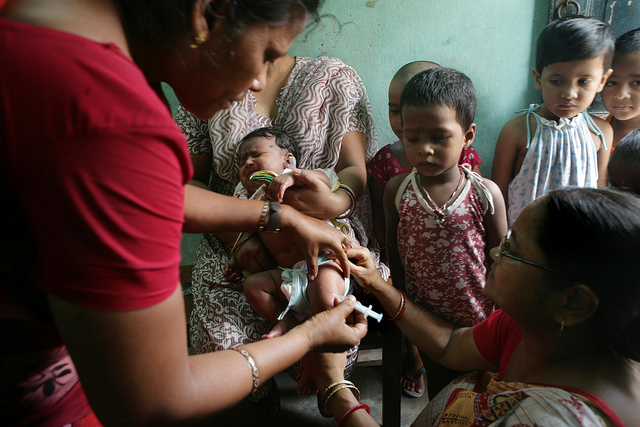28/07/17
Asian countries may miss WHO’s hepatitis target

By: Joiada Cruzate
Send to a friend
The details you provide on this page will not be used to send unsolicited email, and will not be sold to a 3rd party. See privacy policy.
[MANILA] Results from a new survey show that Asian governments are insufficiently prepared to meet the WHO goal of eliminating viral hepatitis as a public health threat by 2030.
The survey, released in time to coincide with the World Hepatitis Day (July 28), evaluated the progress of 13 countries and territories in the Asia-Pacific region in meeting the WHO goal of eliminating viral hepatitis as a major public health threat by 2030. While all countries are committed to eliminating the disease, most have yet to come up with comprehensive national programmes, are slow to provide screening, and don’t have free hepatitis B vaccination and treatment services.
“Historically, hepatitis has been ignored compared to other major diseases,” says Tammy Meyers, lead author of the survey. Meyers attributes this to the ‘silent’ nature of the disease, meaning that people infected with hepatitis B or C strains may not realise it until they develop late-stage liver cancer or cirrhosis.
“Historically, hepatitis has been ignored compared to other major diseases.”
Tammy Meyers, Chinese University of Hong Kong
“Without proper surveillance of the infection and analysis of the financial and human costs, countries have been unable to appreciate the extensive impact and burden of viral hepatitis,” says Meyers, adding that the success of the universal hepatitis B vaccination programme for infants may have lulled some countries into complacency, ignoring the fact that older generations remain unvaccinated and vulnerable.
Still, she is confident that the WHO goal of eliminating hepatitis by 2030 is quite feasible adding that elimination can be reached through a combination of prevention and treatment activities.
“What they (WHO) mean by this (elimination) is that there will be no further transmission of infections, and that people with chronic infection have access to clinical management and care,” Jack Wallace, executive member of the Coalition to Eradicate Viral Hepatitis in Asia Pacific (CEVHAP) and research fellow, Australian Research Centre for Sex, Health and Society, tells SciDev.Net.
Conducted by the Chinese University of Hong Kong with support from CEVHAP, the survey covered Australia, Bangladesh, China, Hong Kong, Indonesia, Japan, Malaysia, Myanmar, Pakistan, the Philippines, Taiwan, Thailand and Vietnam.
Of these, only Australia, Taiwan and Japan have comprehensive national hepatitis programmes against viral hepatitis which kills over 1.34 million people per year globally. Worldwide, some 240 million have chronic hepatitis B infection and 80 million people have chronic hepatitis C infection.
“Government responses to hepatitis don't look at the social and cultural drivers that stop people from being tested and treated. These drivers include the cost of testing and treatment,” says Wallace.
Eight of the surveyed jurisdictions do not provide free hepatitis B vaccinations for vulnerable populations. Also, most people pay out-of-pocket to be diagnosed and treated, except for those in Australia, Hong Kong and Taiwan.
“With regard to hepatitis C, direct antiviral agents are available that can cure patients. However, their accessibility is limited due to restrictive pricing,” Meyers says.Explaining the progress of one of the countries included in the study, Jane Campos, head of the committee on liver advocacy and public health education, Hepatology Society of the Philippines (HSP), believes that the Philippines is in line with the goal of eliminating hepatitis infection by 2030.
“The Philippine Department of Health and HSP have been working hand-in-hand to inform people of the availability of treatment,” Campos tells SciDev.Net. “About 80 per cent of the 110-million population, is aware of the disease.”
This piece was produced by SciDev.Net’s Asia & Pacific desk.













